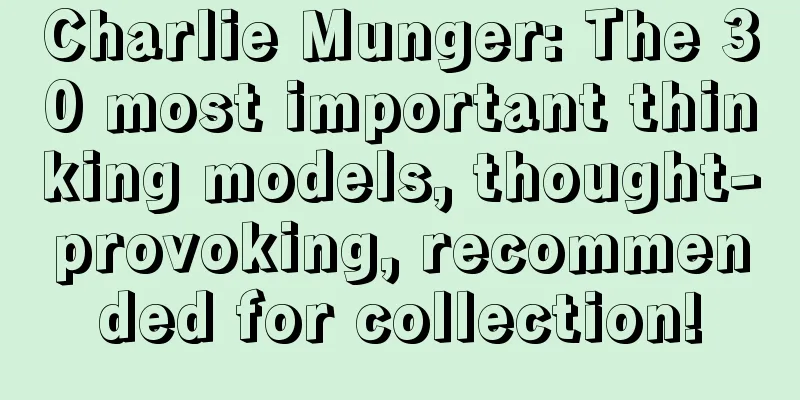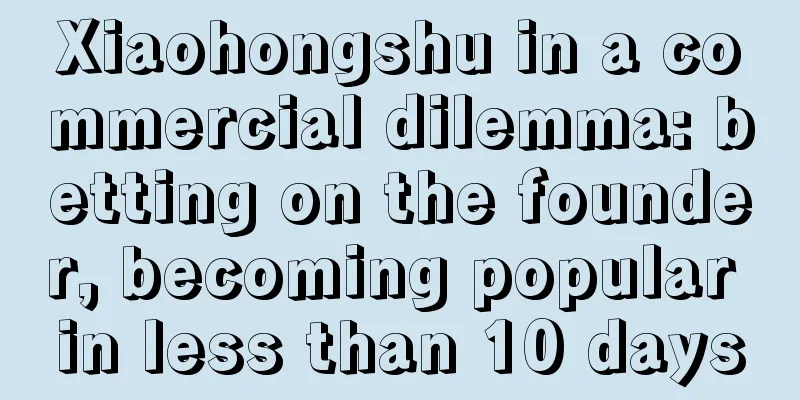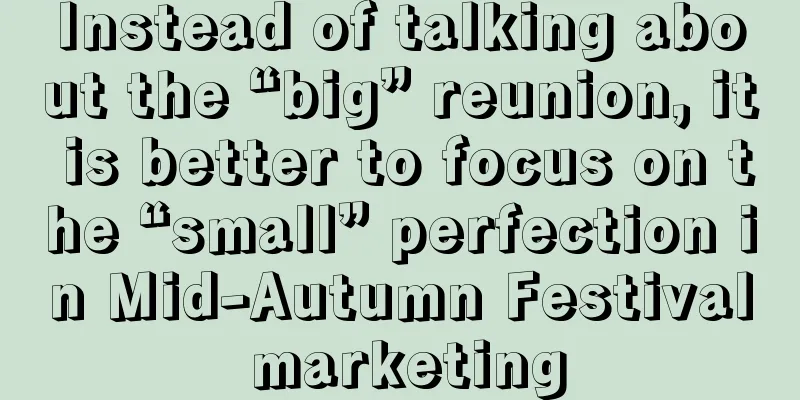Charlie Munger: The 30 most important thinking models, thought-provoking, recommended for collection!

I heard the news that Mr. Charlie Munger, Buffett's investment partner, passed away on November 28 at the age of 99. I can't help but feel sad that a wise man of the times and a generation of investment masters have passed away. I have also read "The Poor Charlie's Almanack" and benefited from his wisdom in entrepreneurship and life. Mr. Munger once said: "The thinking model will give you a perspective or thinking framework, which determines your perspective on things and the world. The top thinking model can increase your chances of success and help you avoid failure." For a wise man, the best way to remember him is to practice his wisdom. Today, I have selected 30 of the most commonly used models by ordinary people from Charlie Munger’s 100 thinking models. They are worth collecting and studying repeatedly and savoring carefully. Below, enjoy: 1. Sunk Cost Thinking ModelRefers to expenses that occurred in the past but are not related to current decisions. We call these irrecoverable expenses, such as time, money, and energy, "sunk costs."
2. Opportunity Cost Thinking ModelIt refers to the opportunity to give up one business activity in order to engage in another business activity, or the income that is given up when using certain resources to obtain a certain income. The basis for enterprises to correctly choose business projects in their operations is that actual benefits must be greater than opportunity costs, so that limited resources can be optimally allocated.
3. Fast and Slow System Thinking ModelPeople have two thinking systems. System 1 is unconscious thinking, automatic driving, and inertial thinking. System 2 requires energy, focus, and concentration. One of the most basic principles of the brain is that you should avoid using your brain if possible, and sometimes you should prevent your brain from making instinctive thinking and decisions.
4. Scarcity mentality thinking modelIt is a scarcity mentality formed by the scarcity of things, and this process is unconscious. When our brain is captured by scarcity, we will focus on solving the scarcity situation, which will lead to two phenomena: focus bonus and tunnel vision burden. Benefits: When we feel we are lacking something, our minds focus on the immediate needs, which makes us more focused and helps us solve problems. Studies show that lonely people are better at reading facial expressions and poor people are better at controlling costs. Disadvantages: First, it narrows your vision, reduces your insight, lacks foresight, and makes you "see the trees but not the forest", which narrows your attention "bandwidth". Second, it makes people lack planning and make wrong decisions. Always reflect on the root cause of your scarcity mentality.
5. Antifragile thinking modelAccording to certain standards, things can be divided into three categories: fragile, strong, and anti-fragile. Fragile things will break or be damaged when they come under external pressure, just like a glass will break when it falls to the ground; strong things will not be affected by external pressure. Anti-fragile things can evolve with pressure in this volatile world and make themselves stronger.
6. Non-stimulus-response thinking modelMany people think based on stimulation and then react, lacking the intermediate process. This intermediate process is one's own choice, which is to turn passivity into initiative, from the stimulus reaction of stress to the choice after stimulation thinking, and then react.
7. Nash equilibrium thinking modelA strategy combination is called a Nash equilibrium when each player's equilibrium strategy is to maximize his or her expected return, and at the same time, all other players also follow this strategy.
8. Loss Aversion Thinking ModelIt means that when people face the same amount of gains and losses, they find the losses more unbearable.
9. Endowment EffectIt means that once a person owns an item, his evaluation of the value of the item will be greatly increased compared to before he owns it. Out of fear of loss, people often ask for too high a price when selling goods. This irrational behavior often leads to reduced market efficiency, and this phenomenon will not disappear as traders gain more trading experience.
10. Herd mentalityIt is usually used to describe the herd mentality of economic individuals. For investment, once the bubble bursts, everyone will find that in the frenzy of the market atmosphere, only the leaders will profit, and those who follow the trend will become victims.
11. Disposition EffectThat is, investors tend to hold losing stocks for too long and sell profitable stocks too quickly. The disposition effect is a common irrational behavior of investors in the capital market. This means that investors are risk-averse when they are in a profitable state and risk-seeking when they are in a losing state.
12. Occam’s razorThe core idea is that "entities should not be added without reason." In simple terms, when explaining a thing or phenomenon, we should try to avoid introducing unnecessary assumptions. If two explanations can explain a phenomenon, then choose the simplest and most economical one. For example, automatic transmission cars are gradually replacing manual transmission cars because automatic transmission meets the "simple and effective principle" for most users.
13. Pareto PrincipleThe "80/20 rule" was discovered by Italian economist Pareto in the late 19th and early 20th centuries. He believed that in any group, the most important ones only account for a small part, about 20%, while the majority of the rest account for 80%, but are secondary. Therefore, it is also called the 80/20 rule, or the Pareto principle.
14. Margin of safetyThe difference between intrinsic value and price, using a deeper moat, purchasing the target at the lowest possible price to create greater room for error and reduce risk.
15. Circle of CompetenceIf you know where the boundaries of your circle of competence are, you will be much richer than someone whose circle of competence is five times larger than yours but who doesn’t know where the boundaries are.” Munger and Buffett tell us that the concept of the circle of competence is very simple, which is to understand the boundaries of your own abilities, and to work within these boundaries so that you can have an advantage over others.
16. Reaction force thinking modelForce and reaction exist at the same time. In an organization, if a system wants to change, it will inevitably be subject to reaction. It requires prior prediction, adequate preparation, leveraging the opponent's force, and turning passivity into initiative in order to achieve greater breakthroughs.
17. Magnifying Glass Thinking ModelWhen thinking, if you magnify an object, you can see many details. Actively magnify. We need to consciously use magnifying glass thinking to discover problems, predict problems, and solve problems.
18. Zooming Glass Thinking ModelWhen you are deeply involved in a situation, it is often difficult to look at many things rationally. At this time, you need to use a magnifying glass to look at yourself and the world around you. The ultimate is to have a God's perspective.
19. Replicable thinking modelIf the world did not have the ability to be irreproducible, it would be difficult for humans to survive to this day. There are many things that can be copied, including: cognition, genes, products, etc. The advantage of replication is that it can quickly reduce the requirements for dynamic factors and can be continuously achieved with the highest (or as high as possible) standards. In addition to surface replication, the more powerful one is cognitive replication.
20. Reverse thinking modelThe reverse thinking model is a very useful thinking model. Many times, we think things are simple and take them for granted. At this time, we need to think about it the other way around, and think about where the bottlenecks are and what points are not in line with reality.
21. Golden Circle ThinkingThe Golden Circle is a way of understanding the world, and it has three levels. The thinking mode is to start from (Why), why should we do this, stimulate emotional emotions from the heart, generate driving force, and then think about (How) how to do it, set goals and solve them step by step, and the final result is (What) that is more in line with the original concept. The process of thinking about why for a company or an individual is a determination of principles, boundaries, and values, providing a general model for solving problems.
22. Prioritization Mental ModelDo the most important things, establish priorities, form habits, execute firmly, and avoid bad habits. 20/80 principle. Do the hard and right things, do the hard and important things.
23. Decision Tree Thinking ModelIt consists of a decision diagram and possible outcomes (including resource costs and risks) to create a plan to achieve goals. Decision trees are built and used to assist in decision making and refer to a special tree structure.
24. Multidimensional Perspective Thinking ModelAvoid being a blind man groping in the dark, look at the problem from different angles, and grasp the key contradictions. A person who can see through the essence of things in half a second and a person who cannot see through the essence of things in his entire life are destined to have two completely different fates.
25. Path Dependence Thinking ModelTechnological evolution or institutional changes in human society have inertia similar to that in physics. Once you enter a certain path, whether it is good or bad, you will continue to develop along that path. The force of inertia will make this choice constantly reinforce itself and make it difficult for you to get out.
26. Daily evaluation thinking modelWe should evaluate and reflect on ourselves every day, and many people have this awareness. However, many people's reflection and evaluation are fragmented, lacking continuity, and are intermittent. Therefore, we need a system to continuously get our own feedback. This kind of feedback, accumulated over time, will bring huge benefits.
27. Systematic review of thinking modelsSystem thinking is a basic way of thinking that organically combines principle and flexibility. The principle of integrity is the core of system thinking. This principle requires people to base themselves on the whole no matter what they do, and to understand and grasp the whole from the interaction process between the whole and its parts, and the whole and the environment.
28. 101010 Observer Thinking ModelWhen planning to make a decision, imagine how you will feel about your decision 10 minutes later, 10 months later, and 10 years later. It can be applied to temporary judgments, major decisions, predicting the future, etc. Keep in mind long-term thinking. 29. Competitive Evolutionary Thinking ModelMany people may think that business should avoid competition as much as possible, and superficially believe that competition means wasting resources, price wars, mutual attacks, etc. However, in fact, the other side of competition is a way to promote self-evolution. Either die in competition or grow in competition. The so-called "catfish effect" is about this principle.
30. God’s Perspective Thinking ModelWhen we do something or judge something, our first reaction, or instinctive reaction, is to look at everything from our own perspective. If we are more advanced, we can look at it from the perspective of the relevant people. If we now look at things from a higher, more objective, and more rational perspective, we will have new discoveries and new areas.
Thank you Mr. Munger, you have enlightened the world with your infinite wisdom and insights into life. Salute to a generation of investment masters. Author: Yan Tao WeChat public account: Yan Tao Sanshou |
>>: In the era of AI e-commerce, how many people’s jobs will be replaced?
Recommend
Want to make a hit short video? Learn to write a good script first
A good script can not only provide clear shooting ...
Are buyers a new opportunity for brands? Let’s talk about my view on Xiaohongshu e-commerce
This article first explains the concept of "b...
After copying Dong Yuhui, Western Selection has "come back to life"
In this era where traffic is king, imitation may a...
Integration of brand and effect: How to achieve both popularity and sales volume, and gain both exposure and sales?
In brand marketing, brand-effect integration is ve...
"Black Myth: Wukong": How to make a good product?
Black Myth: Wukong has redefined the heights of do...
"Information flow" is not a panacea, click-through rate is the key to success or failure
In the field of digital marketing, information flo...
Collection! How to write the title of Xiaohongshu notes (the most comprehensive on the Internet)
From the clever use of keywords to the triggering ...
Just after the Spring Festival, video accounts started to grab traffic
After the Spring Festival, the battle for traffic ...
How to start Shopee live streaming? Steps to start Shopee live streaming
Nowadays, live streaming in e-commerce has become ...
Will AI replace new media professionals? We wrote an article using ChatGPT
This article is divided into two parts. The first ...
Member Upgrade Campaign: A Strategic Guide to Exploring User Potential and Scaling Up Average Customer Price
In the stock era, commercialization is particularl...
How to pay on Amazon? Purchase FAQs
There are still a lot of imported products to choo...
How to make more money from TikTok? Remember these 12 words
Making money on Douyin is no longer as easy as bef...
PR enters the era of user operation
Today, public relations information is always ques...
How many orders does an Amazon novice place in a month? How much money can you make in a month?
If you open a store on Amazon and you place orders...









